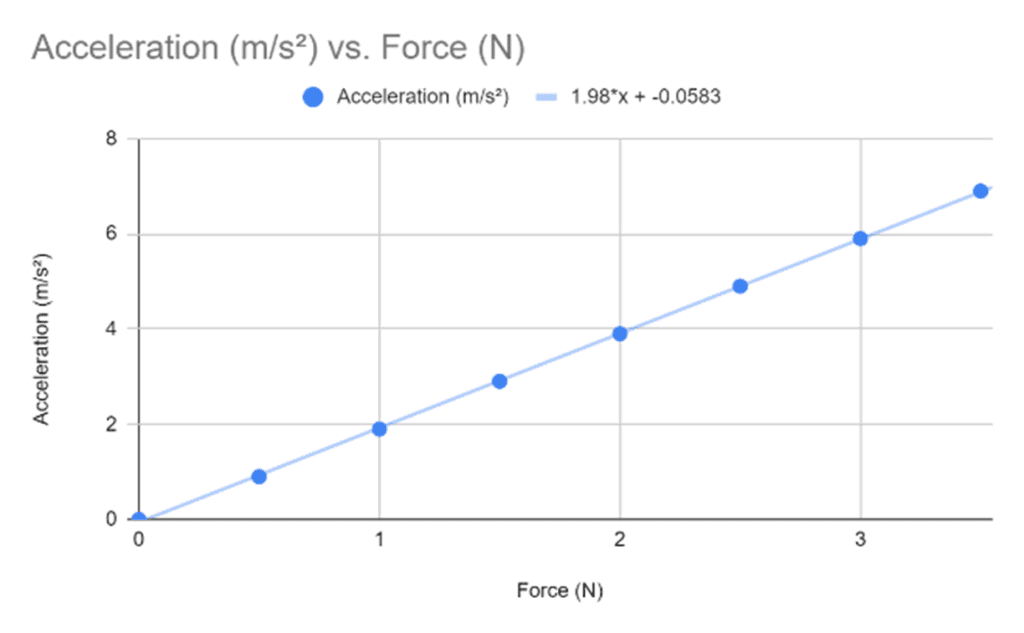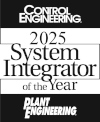
As computational processing power has improved, machine learning (ML) has exploded in potential use cases that stand to improve a multitude of different processes. ML’s particular area of strength is its ability to detect and model complex relationships amongst large numbers of variables described in vast datasets. As the process of digitalization within industrial manufacturing continues to mature, manufacturers will have increasing opportunities to deploy ML techniques for a variety of applications that ultimately improve quality, efficiency, and throughput.
This article introduces the concept of ML, explores use cases within manufacturing, and discusses the foundational upgrades needed to take advantage of it.
Author contributor: E Tech Group Principal Software Developer William Eddins
What is Machine Learning?
Machine learning (ML) is a particular type of artificial intelligence (AI) that looks for patterns and trends in a given dataset to create models that can then be used to make predictions for new incoming data.
Machine learning operates in a very similar manner as the F=ma experiment described in the graphic on the right, but on a more complex scale. Machine learning models aim to generalize patterns learned from the training data to make accurate predictions on unseen data. A variety of different techniques are used to find complex relationships between several system parameters (in manufacturing, they might include force, torque, acceleration, friction coefficients, temperature, pressure, etc.) and create an associated model that accurately describes it.
For example, polynomial regression can capture quadratic or higher-order relationships between a singular independent variable x and associated dependent variable y modeled as an nth degree polynomial. In contrast, more advanced models like neural networks can capture highly non-linear relationships existing among multiple independent and dependent variables.
Current common techniques employed include supervised, unsupervised, and reinforcement learning. While their distinctions are beyond the scope of this article, these ML techniques can generate far more complex models than that of linear regression. However, the guiding principle remains the same: consider various system parameters, and look for trends among them and in the resulting output parameters.
What are the Strengths of Machine Learning?
The ML model’s power as a tool comes from its ability to make predictions, just like the force-acceleration relationship can be used to predict an object’s acceleration from an untested force application. With a sufficiently trained model, previously unknown relationships between certain input parameters and output parameters can be revealed, offering potentially innovative insights into process improvements.
Why is Machine Learning Suddenly so Popular?
ML has become an increasingly mainstream means of solving problems in automated manufacturing processes due to a variety of influencing factors. Some of these include:
- Computational Power Improvements: As general computer processing power has increased, it has allowed for ever larger sets of data to be used for training purposes. Today’s GPU and TPU processors are specifically designed to accomplish the high-speed parallel processing (called single instruction multiple data, SIMD) required for ML operations, which are dominated by matrix mathematics.
- Data Availability: With the internet continuing to mature alongside IIoT devices and associated sensors integrated within manufacturing equipment, large amounts of data are being generated that describe various activities. Sufficient quantities of data can be analyzed to look for patterns and trends, allowing for more complex predictions to be made about a particular system.
- Open-Source Tools: A variety of tools have emerged including TensorFlow and Pytorch. These tools have made it simpler for developers to get started with ML experimentation, leading to easier model development.
- Increased Demand for Automation: There is significant demand for automated solutions in manufacturing to optimize processes, increase throughput, improve quality, and address chronic labor shortages in the sector.
Positioning Machine Learning in Manufacturing
Because ML’s particular strength lies in identifying trends within a dataset, there are nearly endless ways manufacturing processes stand poised to benefit. Some of these include:
- Failure Analysis and Prediction: Machine learning algorithms can be applied to historical operations data to analyze the trends over time and train a model. Initially, this model can help identify and diagnose points of failure. As it continues to learn, the model can be set up to alert engineers before a critical failure occurs allowing them to take immediate action. As a result, downtime can be handled in a less reactive manner, or potentially even prevented altogether.
- Production Line Efficiency: ML algorithms can be used to analyze production line workflows and subsequently optimize their sequencing. For example, parameters that could be optimized include general ordering of tasks and machine settings to reduce wait times between operations.
- Networking: Networking demonstrates how machine learning can be used to enhance path optimization. In networking, there are already several products that incorporate ML to enhance their capabilities. As an example, Cisco’s networking solutions (Cisco DNA Center) use ML and other AI to automate various IT operations, including optimizing data traffic paths. In addition, they can readily detect data anomalies from baseline patterns, resulting in robust security.
- Vision Systems: A model can be trained to identify various objects or particular characteristics from image data. As a result, a robot can use this information to navigate obstacles or identify an object of interest for handling. Vision systems can also be used for defect identification. As an example, Liberty Robotics VPack and VPick vision systems use ML for these types of applications.
- Additional Tools: Some other industrial manufacturing tools that have integrated data analytics capabilities include Rockwell Automation FactoryTalk and Pavilion8, and SEEQ, an application designed for industrial process data analytics.
Comprehending Machine Learning Through Linear Relationships
As a learning tool to help comprehend this concept, consider the relationship that exists between force, mass, and acceleration. Newton’s famous second law states:
Force = Mass x Acceleration: F = ma.
It tells us that there is a linear relationship between an object’s acceleration and the force applied, and an inverse relationship between an object’s acceleration and its mass.
However, what if the relationship between these variables was not readily known, or likewise, someone wanted to experimentally verify Newton’s second law? A series of tests could be set up varying the force applied to an object on a horizontal low friction surface, and each resulting acceleration could be measured.

By varying the applied force and measuring each associated acceleration, the collected data could then be plotted – force as the independent variable on the x-axis, and acceleration as the dependent variable on the y-axis. If reasonably accurate data was collected, the plotted graph would reveal a linear relationship between force and acceleration, with mass as the inverse of the slope of the resulting line. With sufficient data, the experimentally derived mathematical model could then be used to predict the expected acceleration for an untested applied force.
Extending this thought experiment further, what if data continued to be collected over an extended period of time and equipment parameters began to change. Perhaps the wheels no longer rolled as effortlessly, or the surface became bumpier. Both effects would increase the coefficient of friction between the object and the surface. The object’s acceleration would no longer be as high for the same force applied and the model generated from the new data would reflect this parameter change.
Preparing for Machine Learning Process Improvements
As previously described, ML requires data to train a model. Therefore, positioning for ML tools has everything to do with improving data collection, storage, and processing, which requires a thorough approach to the design and controls for automated processes. To position for adoption of ML-based tools, the following steps are foundational:
- Assess the current state of the facility: A robust IT/OT assessment will identify the particular areas of weakness and therefore determine how to best proceed.
- Update and connect all controls systems. In the manufacturing industry, it’s not unusual for legacy equipment with minimal or no connectivity capability to remain in use. ML requires data for modeling. This data originates from the manufacturing process and must be stored in a centralized location, in a historian such as AVEVA’s Wonderware.
- Implement a high-capability MES system to bridge the gap between the production floor and management.
- Upsize communication bandwidth: Data collection inevitably means more network traffic.
- Upsize processing power when possible so that the PLC can handle both its controls tasking as well as data transfer on the network.
- Install sensors: Productivity must be described quantitatively for modeling purposes. Sensors in various locations within the production line can obtain accurate total counts, defect counts, etc.
The more data that can be extracted from every facet of a facility’s automated operations, and the better integrated and user-friendly a control system is, the more value we can reap from machine learning.
A Note on Large Language Models (LLMs)
Perhaps the most widely known use of ML lies in large language models (LLMs) like ChatGPT. In essence, LLMs operate by statistically guessing the next most likely “token” for a particular input. Tokens can represent words, subwords, characters or symbols, depending on the model. Given a previous sentence, the LLM tries to predict the next best token based on patterns it has learned from vast amounts of data.
While it has been trained on extensive knowledge, it does not actually have its own implicit knowledge base. An LLM currently serves as an excellent tool for brainstorming purposes and accelerating work, however there remain accuracy issues within its answers. The dataset behind ChatGPT is of enormous proportions and as a result, the model generation process relies on large quantities of GPUs and TPUs to perform the training.
Remaining questions about any LLM concern the use of users’ input information as further training data for the model. This gray area can lead to LLMs unintentionally being trained on trade secrets input by users, and some individuals are now attempting to extract these trade secrets through strategic input sentences. As a result, industries are increasingly interested in on-premise and offline solutions where they can ensure their data is protected.
E Tech Group: Advanced Automation Services Focused on the Future
As digitalization within industrial manufacturing continues to mature, data describing production processes can be used with machine learning algorithms to train a model, with the potential to reveal previously unknown ways of improving production. E Tech Group strives to stay ahead of the curve in manufacturing and automation technology. By incorporating proven IT security strategy with developing opportunities in AI and machine learning, our clients can leverage cutting-edge automation systems to stay competitive in their industries now and in the future.oduction.
Contact Us
"*" indicates required fields
